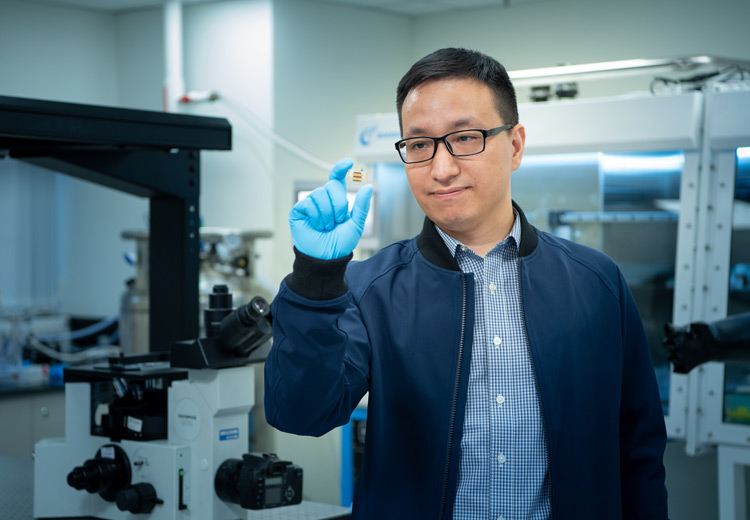Rethinking the solar cell with perovskite

Sponsored by

Sponsored by

The efficiency of perovskite solar cells opens up new possibilities for renewable energy, but to exploit their full potential, science needs to fully understand them
As long as the sun still shines, solar energy will play its part in the future of the energy mix, but more efficient approaches are needed for photovoltaic tech to carry the load. At Hong Kong Baptist University (HKBU), Yuanyuan Zhou, assistant professor in the department of physics and principal investigator of the ΣLab, is leaning into his background in materials science to study the properties and device performance of perovskites.
Zhou is investigating how a greater understanding of the multiscale structure of this organic-inorganic hybrid material might provide an efficient alternative to silicon-based solar cells, which require high temperatures to engineer and are expensive to produce. Perovskite solar cells could be engineered at near-ambient temperatures, and they could be printed from solution inks.
Zhou has observed many properties that explain why perovskites are efficient at photo-absorbent energy transfer. “These materials are unique,” he says. “They are not just a new class of semiconductors but in material science they are a new generation of materials, so there are a lot of intriguing properties and phenomena amongst them. Perovskite can be dissolved mainly because of its ionic bond nature and this is opening up opportunities for perovskites to be printed, like organics, like a plastic. This is a clear advantage if you compare this with other commercial semiconductors.”
Understanding the grain boundaries, intragrain defects, surface and interface of perovskites is key. The more we learn more about fissures and defects on the shape of perovskites, the more we learn about how they affect the motion of electrons and the absorption of light. Perovskite defects, such as symmetric twinning boundaries, are of particularly significant interest to scientists.
“Although it breaks up the long-range ordering of the structure it does not impact electron transport very much, and this is very unique to perovskites,” Zhou says. “There are other defects which can even be beneficial for carrier transport…Ions and electrons can utilise these defects as a channel. This is an opportunity where we can make a discovery for material science, but also make impacts for improving solar energy conversion and other applications.”
Other applications might be found in LEDs and in communications technologies. Some perovskite properties that are undesirable in one end-user context may be beneficial in another. “That is a beautiful part of my research because I can always enjoy finding the uses for the fundamental science I discover,” Zhou says. “That is why I don’t constrain my research only to solar cells. This is very exciting.”
At 25.7 per cent efficiency, there are grounds for optimism for perovskite solar cells, but more work needs to be done to make them more stable. Ultimately, we need to study them more closely.
“Our focus is more on the fundamental aspect,” Zhou says. “It will point out more directions for people to further improve their device because there is a theoretical efficiency of the perovskite solar cell that has not been reached. There is much we can do, more to perfect the microstructures and leverage the defects.”
Find out more about the Department of Physics at HKBU and the ΣLab